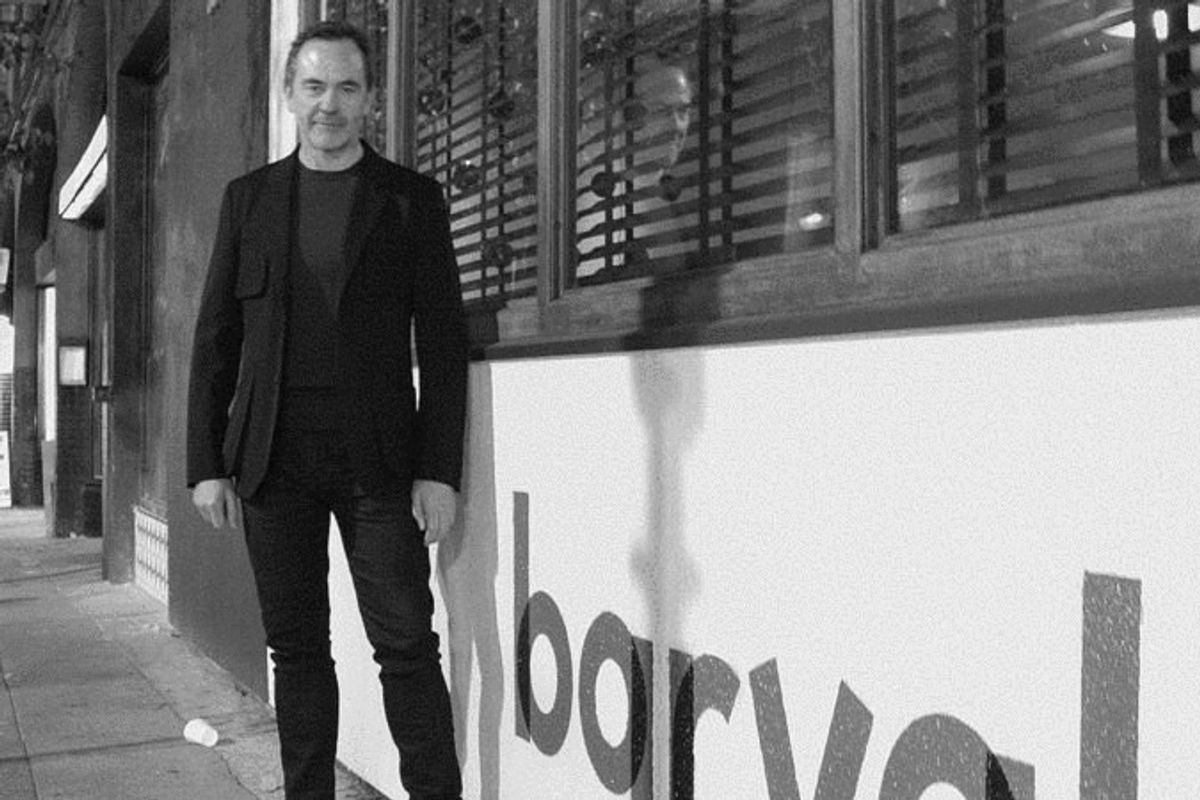I entered the pane glass doors into what felt like the backstage scrambling of a Broadway musical on opening night.
Contractors drilled in the last few window blinds, while waiters cleaned stemware and meticulously positioned place settings throughout the 65-seat dining room. Line cooks shouted demands and station cooks scurried to and fro. Floor staff wiped down mirrors, mopped concrete floors and rearranged the furniture, while others stocked bottles of wine, sherry, bitters, and liquor along the expansive bar, the centerpiece at one of San Francisco's buzziest new restaurants, Barvale.
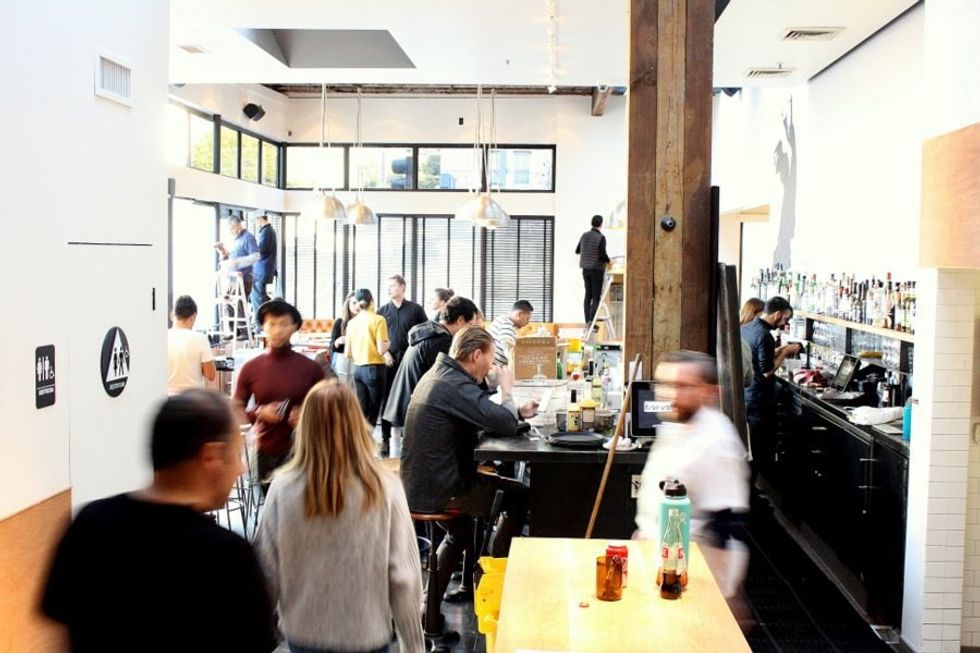
The Spanish-inflected tapas bar, which takes the corner of Divisadero formerly inhabited by La Urbana, is the newest concept from Back of the House, the juggernaut of a restaurant group that's behind so many favorite local eateries. You know them: Beretta, Starbelly, Super Duper Burger, Delarosa, Belga, Lolinda...it goes on. I'm here to interview the wizard of this oz, Adriano Paganini.
The founder and CEO of Back of the House, Paganini is a charismatic Italian with a Cheshire Cat smile, casually dressed in designer jeans for the evening's friends-and-family test run. He gestures to a caramel leather banquette in the corner. "Let's talk over here."
As we settle into the booth, there's really just one thing I want to know: How the hell does he do it? Back of the House operates 22 restaurants locally (and counting), handily making Paganini one of the most successful (if not the most successful) restaurateurs in the most competitive restaurant city in the country.
According to data from Trulia, not only does SF have more restaurants per capita (39.3 for every 10,000 households), "no other city even came close."
And as we all know, SF has an abundance of temperamental tasters. If a restaurant's food, service, decor, staff and community engagement don't come together in perfect harmony, it's only a matter of time before our fickle foodies spread the word and "Yelp Elites" tear it apart one scathing review at a time—an onslaught of feedback that's forced so many restaurants to post that all too familiar it-was-great-while-it-lasted note on closed doors after just a year or two in operation.
So I set out to understand the recipe to Paganini's secret sauce, because anyone running nearly two-dozen successful restaurants at one time clearly has something to teach.
"You have to have passion, creativity, precision and efficiency," he tells me as he pours us glasses of water. "Without all four, it will not work." Born in Milan to blue-collar tailors, Paganini picked up at least a couple of these skill from his parents, as well as perhaps the most important lesson of all: that food doesn't need to be fancy to taste good.
"I don't like fussy food," he says. "I prefer food that is honest, tastes good and is made well," he says, citing his own mother's home cooking—she made two or three meals a day from scratch, and at least one cake or tart per week. But "these weren't elaborate take-all-day-to-cook meals either. She only had 30 minutes to throw something together, and that's what has inspired a lot of the food we serve in our restaurants today. Simple and delicious."
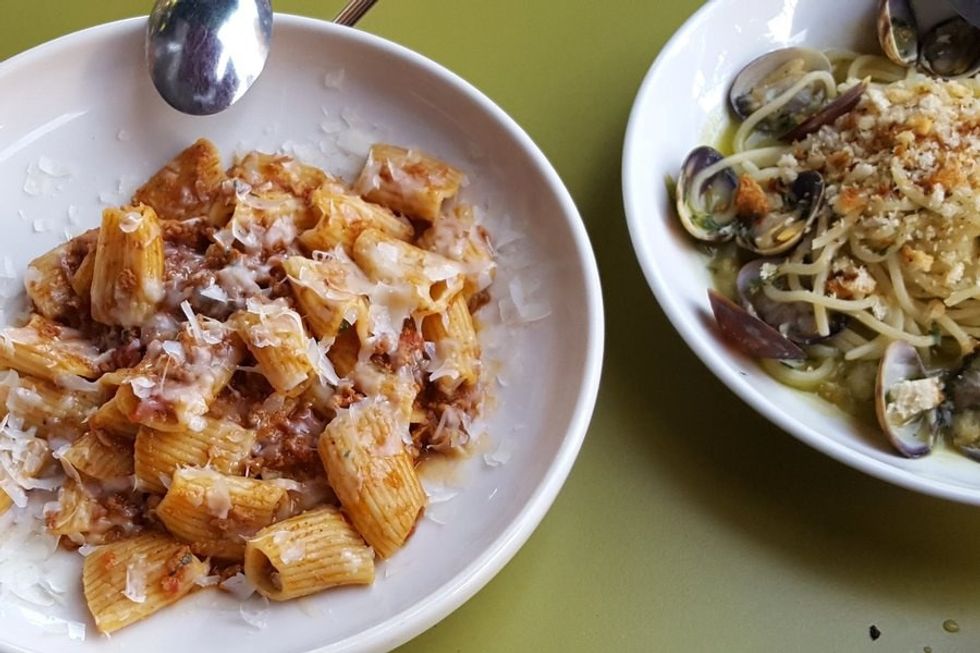
From Italy, Paganini moved to Lyon, France where he cooked in the kitchens of the renowned chef Paul Bocuse, who taught him the value of maintaining a consistent menu over the novelty of always changing things up.
"'With repetition you get perfection,' he once told me, and we practice that today," says Paganini, who does, of course, acknowledge the need to make subtle changes in keeping with the seasons. Finding that just-right balance is all part of the strategy, but it's passion that clinches the deal.
"When we create a concept, we first start with a real passion for the food and the experience we want to serve our guests. Creating an experience that is 'transportative' is critical," he adds, acknowledging the made-up word as he confession that Barvale isn't even trying to be a truly authentic tapas bar; rather, it's a Californian moment inspired by the culture of Spain without being too obvious. Subtlety in the design of a restaurant concept is key, he adds, lest things "feel cheesy."
After cooking in Lyon, the future entrepreneur moved to London where he further honed his skills in the kitchen at Hyde Park Hotel; for five years, he prepared meals for British elite like, you know, Queen Elizabeth II and Margaret Thatcher, earning the chops that garner him respect from his own kitchen staffs today.
At 27, Paganini moved to SF where he briefly ran his own restaurant, Cafe Adriano in the Marina, before opening his first Pasta Pomodoro in 1994. The restaurant took off and the 42-location chain became the poster child for fast-casual dining, but the founder was still forced to sell it at a loss.
"What I got out of the Pasta Pomodoro experience was 14 years of business school," he jokes, but it "left me with a lot of people I trusted who wanted to come and work for us in whatever our next project [would be]."
You've heard of Beretta?
Well, the contemporary Italian eatery in the Mission followed closely on the heels of Pasta Pomodoro and, having recently celebrated its 10th anniversary, is the proof in Paganini's pudding. As crowded today as it was when it first opened, Beretta keeps us coming back for tried-and-true dishes (funghi misti pizza, squid ink calamari risotto) balanced with an innovative drinks program and a hip-yet-neighborhood-y vibe. And of course it doesn't hurt having a team of industry veterans who have been there for years.
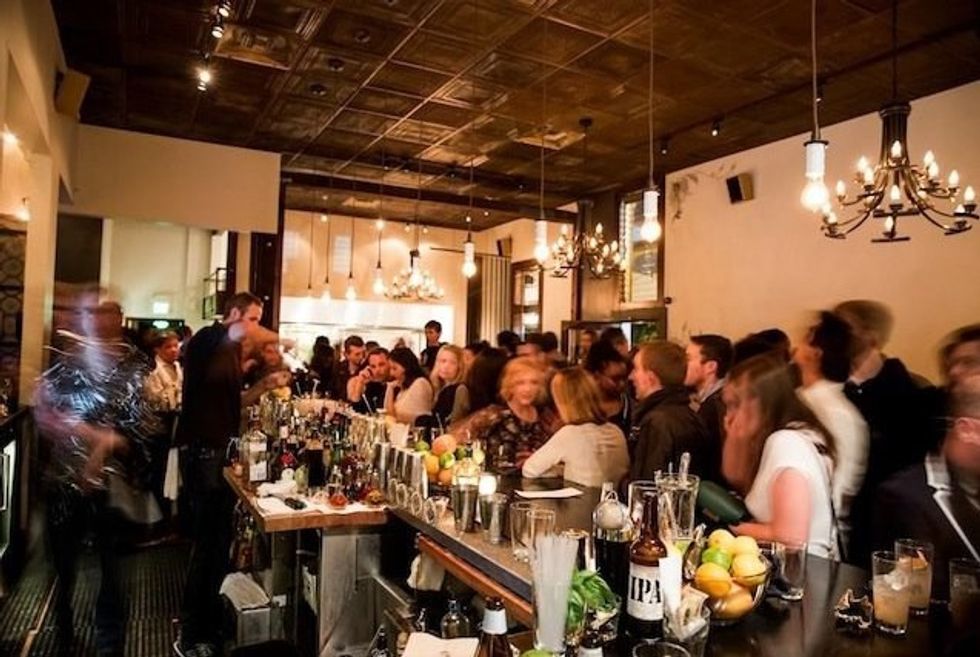
"This business isn't a sprint, it's a marathon," says Paganini, making a quick call to confirm the rest of the blinds will be installed by opening night. "The first year may work because you're new and exciting and everyone wants to check you out, but if your restaurant is going to be a viable concept, it needs to last at least 10 years."
The last big piece of the pie for Paganini is the big working family he's assembled over the past two decades. If you take stock of Back of the House's upper management, you'll find that many staffers here began as waiters and line cooks. Director of operations Jessica Spencer-Flores got her start as a server at Starbelly. Luis Flores, general manager of Uno Dos Tacos and his first own full-service restaurant Flores, was a manager at the very first location, in the Castro, of Super Duper Burger. Giovanni Joris, a former server at Lolinda, is now GM at A Mano. And Patricio "Pato" Duffoo, who started with Back of the House as the sous chef at Starbelly, is now the executive chef of Barvale.
"This is what excites me—I see them grow and get better and smarter," says the boss. "We share a philosophy for providing customers with good value, and it's easy to see consistency across all our restaurants because it's what we all believe. It's not manufactured or forced."
Value is the common denominator in Back of the House restaurants, whether they are quick- or full-service models, and it's this concept that Paganini feels most restaurateurs struggle to get right. But this restaurant group spends a lot of resources on determining value for each of its brands, a task requiring an analysis of their respective competitive landscapes.
"Value is not necessarily the cheapest plate of food," he says. "Take Super Duper. It happens to be the most expensive quick-service burger in the area, but it's delicious, and we responsibly source the ingredients, use compostable materials, have good customer service, and create an experience that customers enjoy. So we can charge $8 for a fast food burger because we know it's a good value compared to the other options."
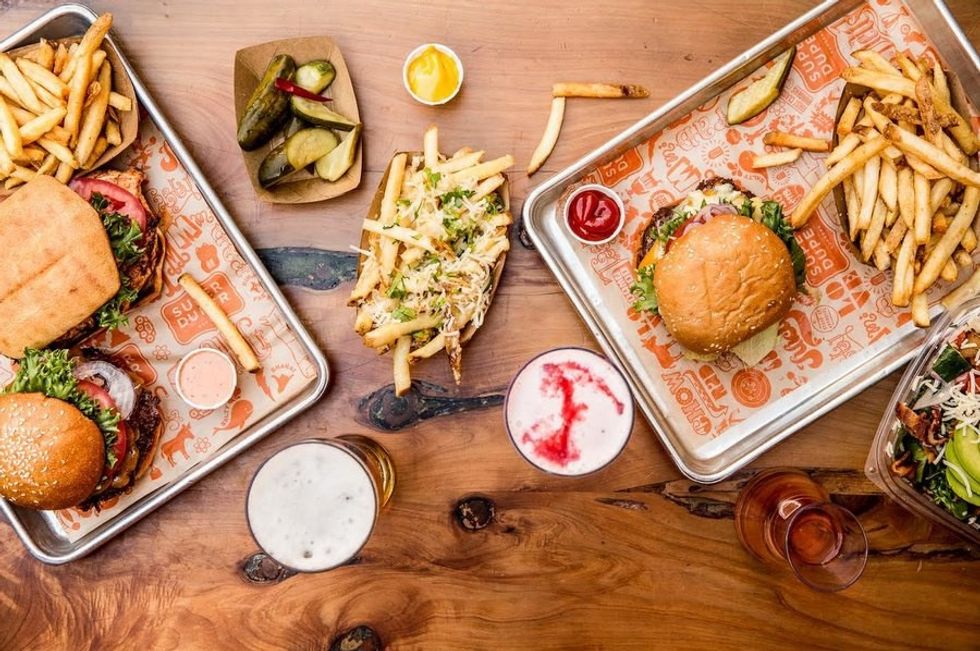
Similarly, the newly opened Barvale also fills a void, the space between low-quality tapas and $50 paella. Here a group of friends can enjoy a carafe of sangria and a variety of mouthwatering tapas without breaking the bank. And that lack of pretension is Back of the House's sweet spot.
"I like to think we're a blue-collar company, because at the end of the day we're just cooks," he says with pride, watching the assembled team of hipster servers, talented chefs, and epicurean aficionados—just a handful of his 1,000-plus member group—readying themselves for the evening's guests.
"People often tell me I should keep all my recipes and trade secrets close to the vest, but who cares!" he continues. "There's nothing more important than your team, because what's crazy is that you have to start from scratch every single day when you open up your doors. And since I'm not doing it myself in each location, I need to have the right people I can trust doing it for me."
As if on cue, the staff busts into the happy birthday song for Barvale's manager, and I can see her blushing from across the room.
"At the end of the day, people want to be part of something. They want to be respected, they want to be recognized, and they want to know you see them doing a good job."
Ask him which restaurant is his favorite, though, and he'll sigh as any doting parent would before diplomatically expounding of each child's uniquely perfect virtues. And that's when the secret to Back of the House's success becomes clear: It's one big happy family. And an ever-growing one at that: Look for a handful more Super Dupers to open in the Bay Area as well as at least a few new ideas in the making.
// Barvale, Back of the House Inc.; 661 Divisadero Street (NOPA); barvalesf.com



